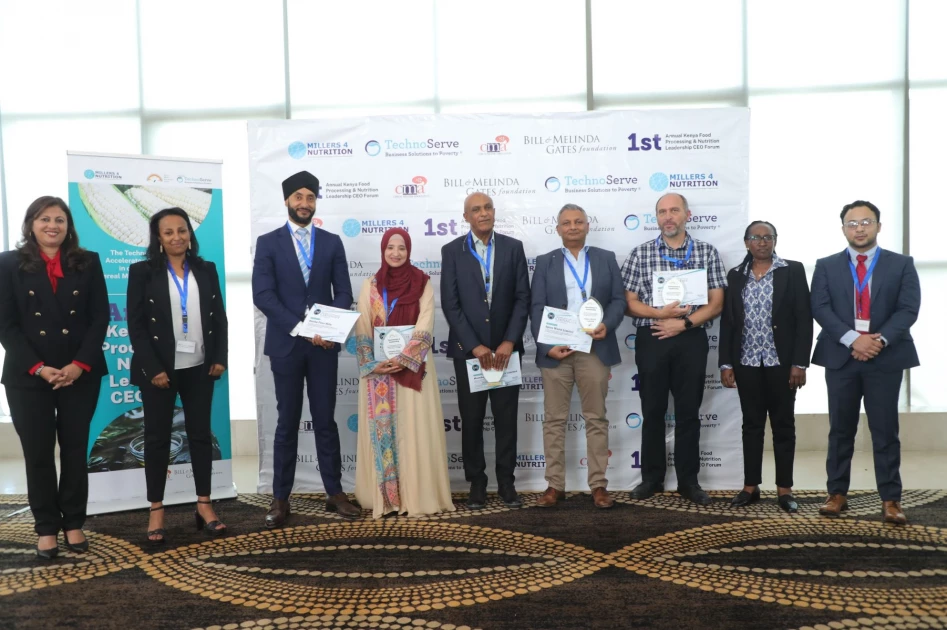Kenyan millers launch food fortification index to address malnutrition

Different cereal company representatives that piloted the Kenya Millers Fortification Index (KMFI).
The
Cereal Millers Association (CMA) has launched a food fortification index in
collaboration with the international non-profit TechnoServe to address malnutrition
in Kenya.
Dubbed
the Kenya Millers Fortification Index (KMFI), it aims to bolster local flour
millers’ commitment to producing nutritious and sufficiently fortified food
products, with the intention of scaling the initiative to include other staple
foods.
The
final scores on the index are based on a self-evaluation tool, industry
insights provided by an independent expert group, and product quality testing
assessing fortification and aflatoxin levels against national standards.
KMFI
rankings are set to provide compliance ratings and showcase companies’ fortification
compliance efforts, as well as support the effectiveness of regulators.
They
are also expected to serve as the basis of an award scheme that recognises
fortification compliance, incremental process improvements, and innovations in
quality management.
CMA represents about 40 per cent of the total maize milling capacity and over 90 per cent of the wheat milling capacity in Kenya.
“We'd
like to see the regulators get involved, we'd like the consumers to get
involved and start demanding more nutritious food and I think these are the
ways that we can really scale up fortification and the KMFI,” said CMA CEO Paloma
Fernandes.
Large-scale
food fortification entails a process of deliberately increasing the content of
one or more micronutrients such as vitamins and minerals in widely consumed
staple foods.
In
2005, the Kenya National Food Fortification Alliance was formed to spearhead
the country's planning, implementation, and monitoring of fortification
initiatives.
The
alliance comprised members from the Ministry of Health, Kenya Bureau of
Standards, research institutions, UN agencies, development partners, and
umbrella bodies from the cereal millers, salt, and oil industries.
In
2012, fortification standards were set, and legislation was passed making it
mandatory for the fortification of maize, wheat, and oil.
According
to the Kenya Demographic Health Survey (KDHS, 2022), the prevalence of stunting
has reduced from 26% in 2014 to 18% in 2022, which can be attributed to food
fortification efforts.
Want to send us a story? SMS to 25170 or WhatsApp 0743570000 or Submit on Citizen Digital or email wananchi@royalmedia.co.ke
Comments
No comments yet.


Leave a Comment